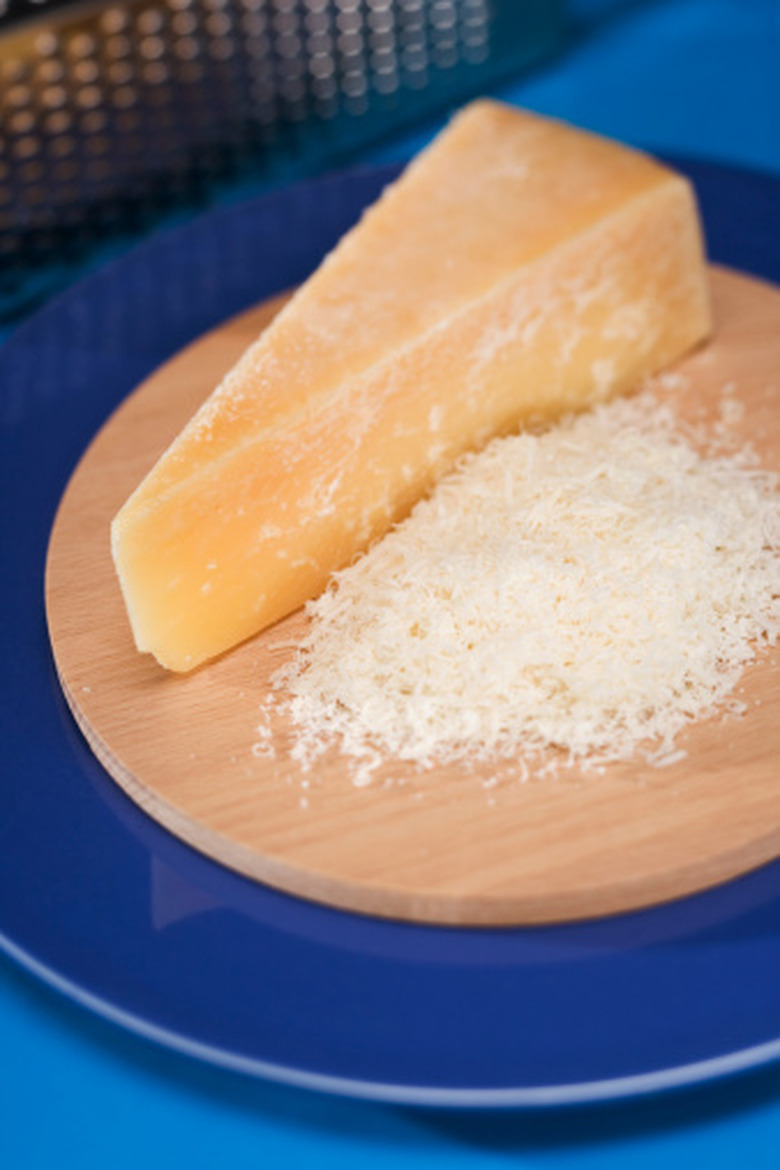What Is The Difference Between Rennin & Rennet?
Rennin and rennet are often confused because they sound similar and they both play a role in traditional cheesemaking processes. Rennin, also called chymosin, is a naturally occurring, protein-digesting enzyme found in the fourth stomach of young mammals. Rennet, a commercial form of rennin, is used in the production of most cheeses.
What Rennin Does
What Rennin Does
Rennin, which is found only in the fourth stomach of cud-chewing animals, such as cows, sheep and goats, curdles milk by transforming caseinogen into insoluble casein, a process called coagulation.
Most milk protein is casein, which comes in four main molecule types: alpha-s1, alpha-s2, beta and kappa.
While the alpha and beta caseins are readily discharged by calcium, the kappa casein interferes with the process. Essentially, it stops the alpha and beta caseins from precipitating and prevents the automatic coagulation of milk proteins. This is where rennin comes in: It deactivates the kappa casein and changes it to para-kappa-casein and a smaller protein called macropeptide. Para-kappa-casein cannot stabilize the micellar structure and the calcium-insoluble caseins precipitate, create a curd.
The curdling process helps the nursing baby mammal digest its mother's milk by keeping it in their stomach for longer. If the milk wasn't coagulated, it would pass through the stomach very quickly and its proteins wouldn't be initially digested.
In humans, who don't have rennin, milk is coagulated by pepsin, a powerful enzyme in gastric juice that breaks down proteins into smaller peptides. Pepsin is one of the main digestive enzymes in humans and many other animals.
Where Rennet Comes From
Where Rennet Comes From
Rennin is the active ingredient in rennet, which traditionally comes from the stomach of slaughtered newly-born calves. Other animal sources of rennet are ewes (female sheep) and kids (baby goats). For vegetarian cheese, rennet comes from bacterial or fungal sources, or genetically modified micro-organisms.
Today's cheesemaking industry uses many alternatives to chymosin. The vast majority of cheese is made with enzymes produced not by baby animals, but genetically modified microbes, such as Cheez It produced with genetic engineering.
Nowadays, rennet is the name used to describe any enzymatic preparation that clots milk.
Commercial Use of Rennet
Commercial Use of Rennet
As well as being use to make cheese, rennet is used as a coagulant in some yogurts and in a soft, pudding-like dessert called junket.
The Indian cheese paneer is one cheese that does not need rennet because the manufacturing process involves curdling heated milk with lemon juice or another acidic food.
Cite This Article
MLA
Gillespie, Claire. "What Is The Difference Between Rennin & Rennet?" sciencing.com, https://www.sciencing.com/difference-between-rennin-rennet-8182538/. 22 August 2018.
APA
Gillespie, Claire. (2018, August 22). What Is The Difference Between Rennin & Rennet?. sciencing.com. Retrieved from https://www.sciencing.com/difference-between-rennin-rennet-8182538/
Chicago
Gillespie, Claire. What Is The Difference Between Rennin & Rennet? last modified March 24, 2022. https://www.sciencing.com/difference-between-rennin-rennet-8182538/
